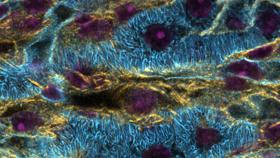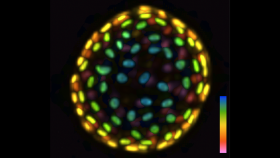
Research interests include use of micro/nanofluidics for cell analysis, diagnostics, and chromatin analysis. Specific research topics include high throughput 3D cell cultures, organs-on-a-chip construction and design, the role of rhythm in cell signaling, self-switching fluidic circuit design, fracture fabrication, and microscale liquid-liquid phase separation.
We work on organs-on-a-chip systems of the lung, intestine, cancer, adipocytes, and other tissues. We have also developed therapeutic microfluidic systems for treatment of infertility. As we worked with these systems, we realized the critical needs to incorporate the immune system and to facilitate biochemical analysis of cellular responses using small volumes of liquid available from the organs-on-a-chip. For this purpose, we have developed neutrophil extracellular trap (NETs) inspired inflammatory biomaterials. We have also developed aqueous two phase system (ATPS) droplet arrays that allow convenient, reliable, and high throughput immunoassays of cytokines. The ATPS technology is also useful for cellular bioprinting. One of the advantages of microfluidic cell cultures, compared to conventional static cell culture, is the ability to perform biorhythmic cell stimulation. We have significant interest in combining microfluidics, live cell imaging, and computational modeling to dissect signaling pathway architectures and better control cellular function. Working with small numbers of cells, we also realized there was a need for single cell, single fiber epigenetic analysis. Towards this goal, we are developing nanofluidic devices to linearize single chromatin fibers and perform high-resolution histone modification mapping.
New technology can transform the way scientists view and interpret microscopic images






